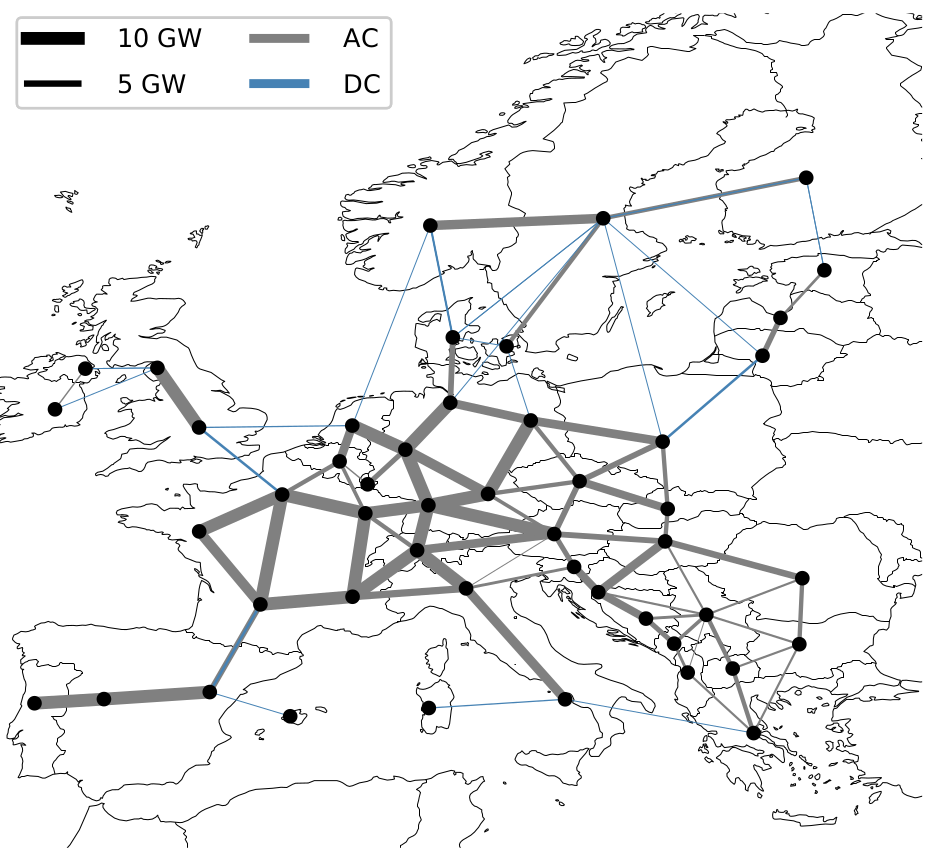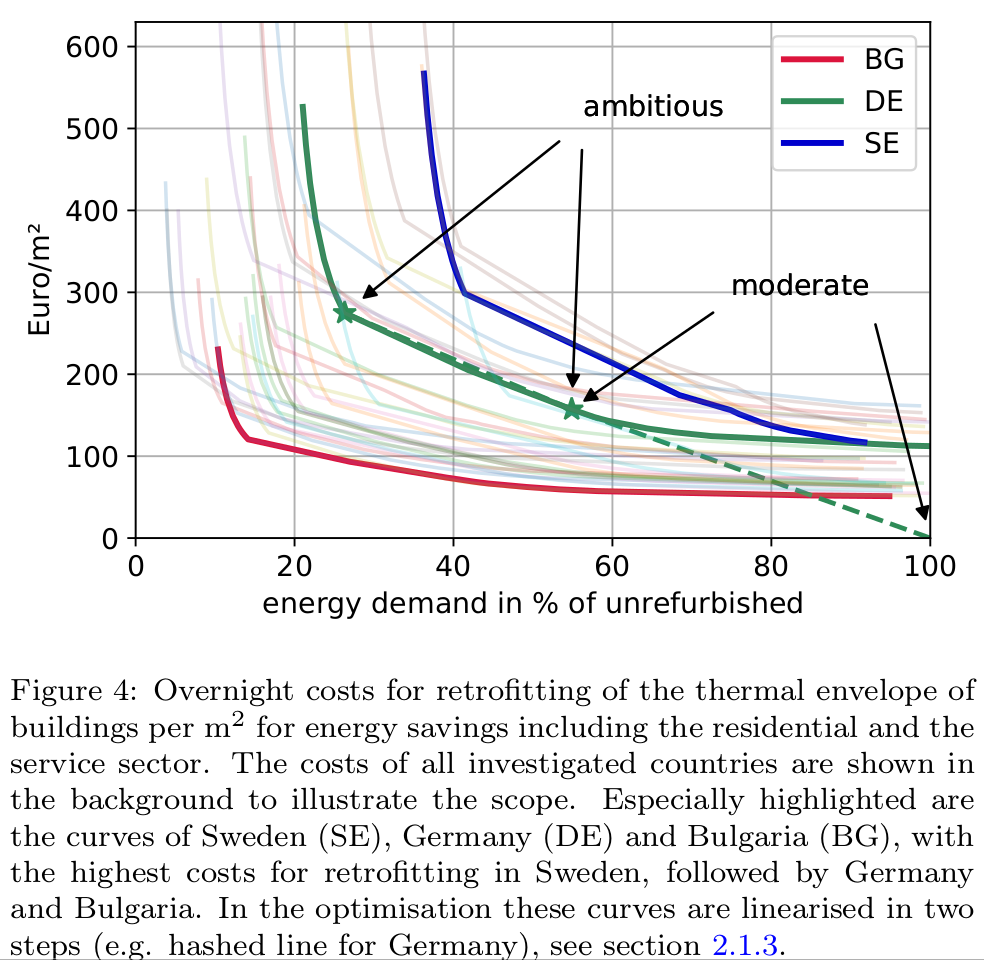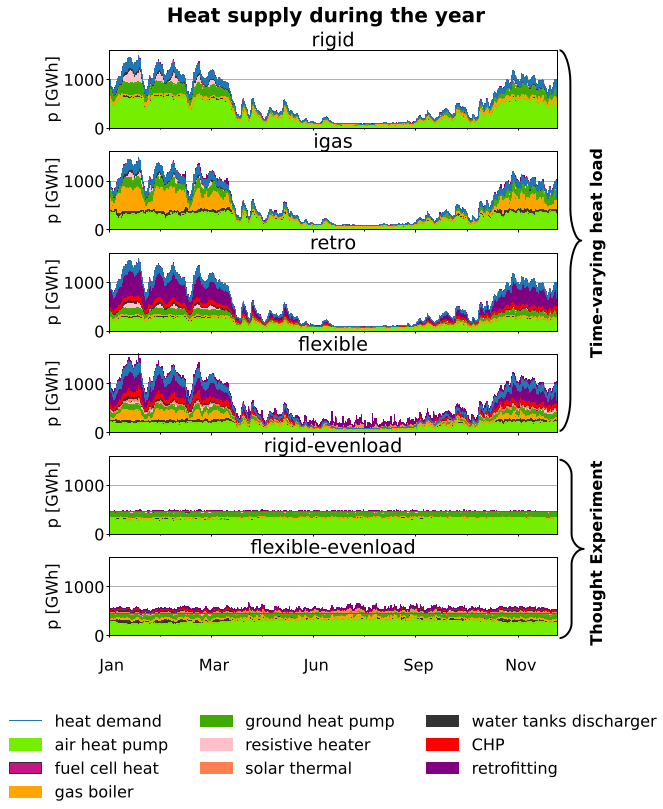Mitigating heat demand peaks in buildings in a highly renewable European energy system
First Posted: 2022.03.15, Last Revised: 2022.03.15, Author: Tom Brown
- Renovating buildings to make them more efficient doesn't just reduce energy use
- It also reduces demand peaks in electrified system
- Critical for the kalte Dunkelflaute! (cold, electric heat, low wind, low sun)
- Strategies for heat demand in zero-CO2 Europe in a new paper


—
New(ish) paper from 2021 led by researcher Lisa Zeyen
"Mitigating heat demand peaks in buildings in a highly renewable European energy system"
Open access in Energy:
https://doi.org/10.1016/j.energy.2021.120784
Also on arXiv:
https://arxiv.org/abs/2012.01831

—
What's the problem?
You may know the "Dunkelflaute" - difficulty of supplying with wind and sun when both are low.
If we electrify building heating, we double-down on Dunkelflaute, because low wind and sun can coincide with cold periods with high heat pump use and low COP.

—
Lisa Zeyen used our sector-coupled European model to explore both supply and efficiency measures in buildings.
The model separates residential and services demand based on whether it is urban, rural or supplied district heating.
It runs for Europe with hourly resolution.


—
She then built cost curves for building renovation measures that reduce space heating demand. These are based on building stock datasets from hotmaps, EU Buildings Database & TABULA.
The model optimises investments in supply and building renovations itself (i.e. endogenously).

—
In several scenarios, different options for mitigating those nasty heat demand peaks were explored:
- building retrofits
- allowing thermal energy storage (TES) in buildings
- allowing backup gas boilers in individual buildings (aka hybrid heat pumps)

—
Impact on system cost for net-zero-CO2:
- Without building retrofits (right 4 scenarios), TES and hybrid heat pumps add value
- With building retrofits (right 4 scenarios), TES and hybrids add little
=> Gas distribution to buildings can be removed with only 1-2% cost impact!

—
Why does TES have so little impact?
Because in individual buildings, it cannot store thermal energy for long enough to cover the multi-day kalte Dunkelflauten. Only in areas with district heating can it help (e.g. large hot water tanks that store for weeks/months).
—
Why do backup boilers not help?
Without retrofitting, they provide a back-stop on cold days with expensive electricity.
With retrofitting, peaks from heat pumps are reduced relative to rest of system, so the backup boilers are less important.
—
How to distinguish whether reducing overall energy demand is driving retrofits, or rather reducing the nasty heat peaks?
We ran a thought experiment: a fictitious scenario where the building heat load is flat, i.e. not temperature dependent. There is barely any retrofitting.

—
Costs are 30% lower with an even load than with the realistic peaked winter heat demand.
=> What drives building retrofitting is NOT lowering overall energy demand, but rather reducing the heat demand peak, which is hard to meet from the electricity supply side.

—
As with all these analyses there are important caveats (see SI for more):
- We look at costs, ignoring taxes, subsidies and regulatory barriers
- Co-benefits of retrofitting like increased comfort & jobs are not taken into account
- The building stock is heavily aggregated
—
- We assume a benevolent optimiser-God, but social factors/regulation as important as cost in consumer decisions
- There is uncertainty in all data and lack of precision on buildings in services sector
- We exclude waste heat for industry that could be used in district heating
—
Alas, some model inaccuracy / reduction is necessary to capture important system interactions between sectors and regions.
Still, we hope the analysis is useful and welcome any thoughts / comments / criticism!